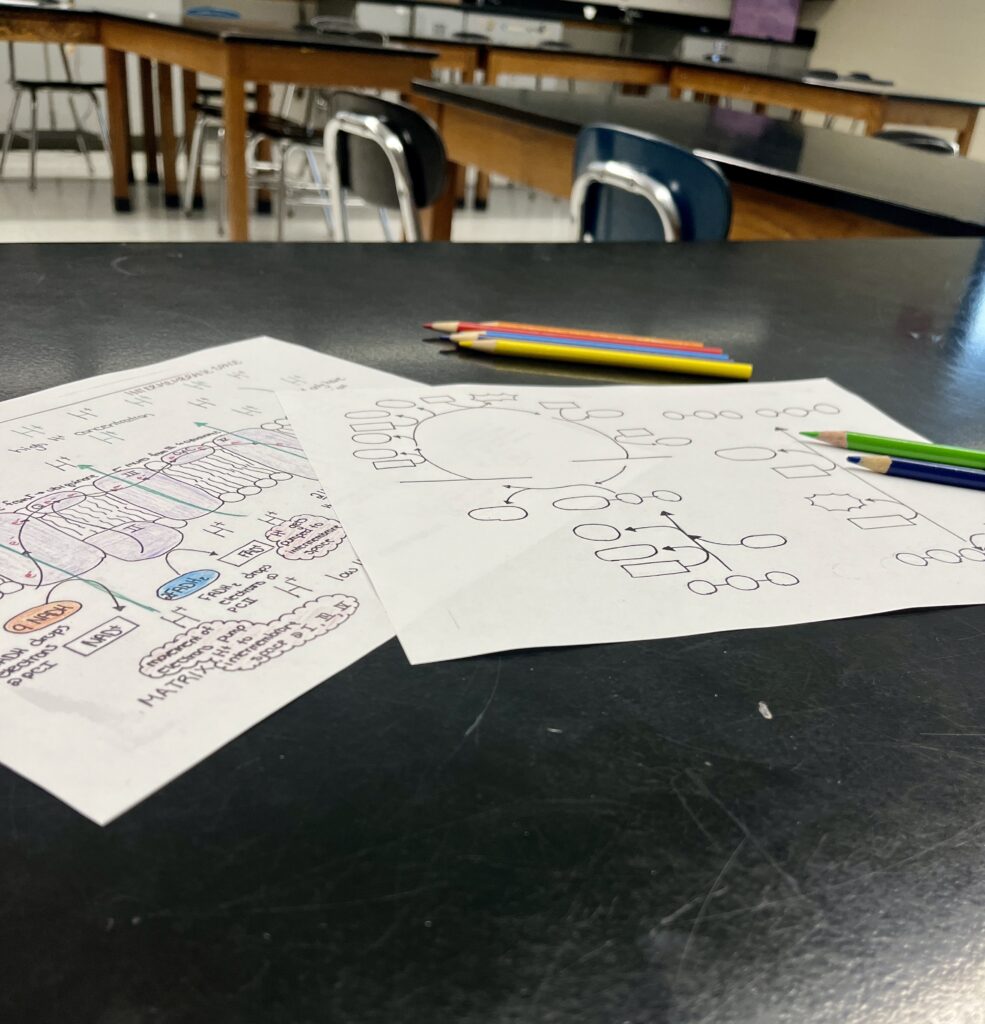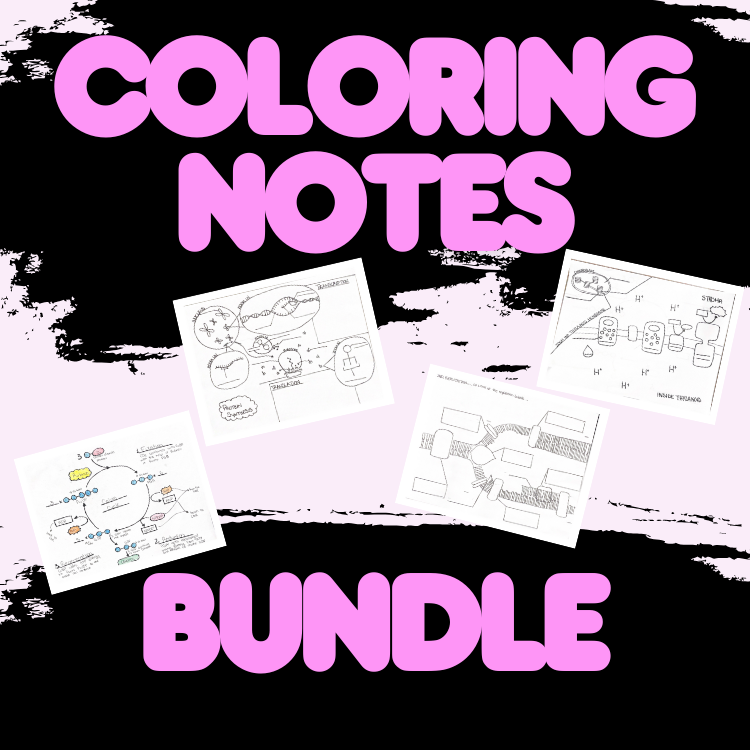Let’s face it—concepts like photosynthesis, cellular respiration, DNA replication, or protein synthesis can be pretty overwhelming for students.
These ideas are abstract and happen on such a tiny, microscopic level that it’s hard for students to really grasp what’s going on. That’s where visualization becomes a game-changer. Written notes with pictures might help a little, but they just don’t do enough to bring these complex processes to life. So, here’s a secret: coloring while taking notes can make all the difference.
Key notes
- Color notes improve engagement and retention
- Visualization is key for complex processes
- Color notes are versatile and flexible
When students color their notes, they’re not just passively writing things down—they’re actively engaging with the material. They have to think about what to color, which parts of the process to highlight, and then make sure they have the written information down as well. This dual engagement helps students remember information more effectively than if they were just jotting down words. Plus, the act of coloring breaks down complicated topics, like photosynthesis, into smaller, more manageable chunks, making them less overwhelming for high school students.
Why Color Notes Work: The Power of Visualization
Conventional notes have their place, but color notes activate different areas of the brain. By combining memory with creativity, students can make lasting connections with what they’re learning. Color notes work especially well in science, where many processes are complex and difficult to visualize. When students color-code and add their personal touch, they can better understand and retain the material. And the best part? They get to add their own style—picking the colors that work for them and highlighting what they think is most important.

In my classroom, I love using color notes for visual processes like cellular respiration or protein synthesis. It’s an easy way to start big—coloring large structures or enzymes—and then dive deeper into the smaller, detailed steps that follow. Through the coloring process, students break down a big, complicated process into bite-sized pieces they can more easily digest.
Getting Creative with Color Notes
When my students are first introduced to color notes, I like to choose the colors for them. This helps them focus on the basics without feeling overwhelmed. But after a few rounds, I let them get creative. They can pick their own colors and add extra details or notes as they see fit. The flexibility of color notes is one of the things I love most—they can be used in so many different ways. Whether it’s for direct instruction, homework, study tools, or group work, color notes have a versatile role to play in the classroom.
Don’t Be Afraid to Try Color Notes
I know some teachers may be hesitant to try color notes. Maybe it’s not their style, or they’re unsure where to start. But trust me, don’t let that hold you back. Coloring while taking notes is a simple, yet powerful way to help your students focus and really engage with the content. It’s an excellent visualization tool that can make even the most complex processes feel more accessible.

If you’re curious about giving color notes a try, check out my Teacher-Pay-Teacher store. I’ve got pre-made color notes, along with instructions on how to use them, alternative ways to incorporate them into your lessons, and a color-coded answer key. If you’re not sure where to start, this is the perfect place to jump in! Check them out by clicking the link below!
color notes for any topic
Try out color notes for any topic
Lesson plans and ideas for use included to allow you to seamlessly use them in your classroom

